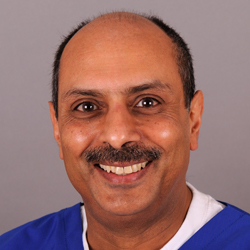 £
Berkshire
01753 856233
Old Windsor Dental Practice
£
Berkshire
01753 856233
Old Windsor Dental Practice
" Dr Bose has been treating my two boys for a few years now with getting their braces fitted. Hes been really good with my kids. He is very efficient and does not rush the treatment. I would highly recommend his services to anyone wanted good treatment for their children. "
Functional appliances are a type of braces that are used to correct problems with the top set of teeth biting in front of the lower set of teeth. They are used for younger patients whose teeth are still developing. Functional appliances can be fixed or removable, although the removable option is usually favoured.
Common removable functional appliances comprise two parts, an upper and lower section, which are interlocked to move the lower jaw into a more advanced position. They are used to correct protruding upper teeth, also known as buck teeth.
One of the most common functional appliances is the Twin Block. With this system the lower jaw is gently moved forwards using a screw mechanism. There is also an expansion screw for the upper jaw, and sometimes the lower one too, that's used to widen the upper arch. Although this system can be used on patients of all ages, it's most commonly used for child patients, and is often the first phase of orthodontic treatment, to be followed later by braces and a retainer.
Your orthodontist will advise you how many hours per day you should wear your appliance. Following these instructions correctly can lead to a dramatic improvement in the position of your teeth.
Check with your orthodontist. Some foods, particularly chewy foods such as toffee and hard foods such as raw carrots, may be impossible to eat when wearing your device, and you should not try because you could damage it. If you are advised to remove the appliance to eat, make sure you keep it in a secure, hard case and put it back after you've finished your meal – once you've brushed your teeth, of course.
It is likely to be uncomfortable for 3-5 days after fitting and any adjustments. If you experience pain at this time, over-the-counter painkillers usually help, and the discomfort soon settles down as your mouth gets used to the brace.
The appliance may affect your speech for the first couple of days, but practising reading aloud to yourself will soon have you speaking normally again. If you play a woodwind or brass musical instrument, you may have to adjust your playing technique slightly – your music teacher can help with this.
Fixed braces are the most common way to treat a range of orthodontic problems. Both adults and children have been successfully treated with such braces for many years. These appliances work by using a system of brackets and wires to gently reposition the teeth, helping to alleviate problems such as overcrowding, misaligned and gappy teeth. It's important to address these issues because, as well as making patients unhappy with their appearance, misaligned, crowded and gappy teeth can cause difficulties with biting and chewing food and with cleaning the teeth properly, potentially leading to other problems such as tooth decay or gum disease.
Traditionally, fixed appliances are made out of metal, although there are also tooth-coloured alternatives available for patients who are self-conscious about wearing braces. Because these appliances are designed to be non-removable, nobody but your orthodontist should attempt to remove them. In the unlikely event that your brace breaks, please contact us immediately so that we can repair or replace it.
The length of treatment varies from patient to patient and depends on the nature of what needs correcting, but on average treatment with fixed braces lasts between 18 and 24 months. Once you have completed your treatment with fixed braces, you will be given a dental retainer to wear. This may be removable or may be fixed to the lingual (back) side of your teeth.
You will be able to eat normally wearing a fixed brace, although you should avoid hard sweets and anything containing too much sugar, as teeth can be more prone to decay when wearing braces if you don't follow a diligent oral hygiene regime. Hard food such as crunchy fruit and vegetables should be cut up before eating. Sugary drinks should also be avoided.
You should clean your teeth at least three times a day, especially after meals. Carry a toothbrush and toothpaste with you or keep a spare set in the drawer at work so you can clean your teeth properly at lunchtime. Pay particular attention to where the gums meet the teeth and use a fluoride-based mouthwash once a day, just before you go to bed.

Joined the practice in 1996 and have owned it since April 2008. After several hospital jobs in Nigeria and Zimbabwe, did a Masters degree in London and re-qualified at Guys Dental Hospital. He subsequently worked toward and obtained a post-graduate qualification in General Practice.

Address
2 Lyndwood Parade, St Lukes Road
Old Windsor, SL4 2QX
Contact
Call us: 01753 856233
Email: info@oldwindsordental.com
Policies